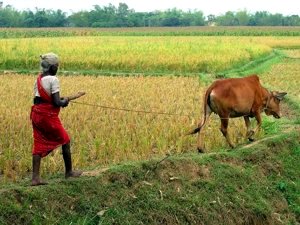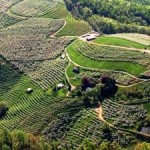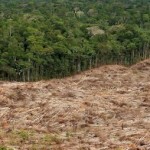 Johannesburg / Washington – New research presents solutions to meet the world’s growing food needs, while advancing economic development and environmental sustainability. The analysis finds that the world will need 70 percent more food, as measured by calories, in order to feed a global population of 9.6 billion people in 2050. It is possible to close the food gap, while creating a more productive and healthy environment through improvements in the way people produce and consume food.
Johannesburg / Washington – New research presents solutions to meet the world’s growing food needs, while advancing economic development and environmental sustainability. The analysis finds that the world will need 70 percent more food, as measured by calories, in order to feed a global population of 9.6 billion people in 2050. It is possible to close the food gap, while creating a more productive and healthy environment through improvements in the way people produce and consume food.
The findings are being unveiled in the new interim report of the “World Resources Report: Creating a Sustainable Food Future”, produced by the World Resources Institute (WRI), United Nations Development Programme (UNDP), United Nations Environment Programme (UNEP), and the World Bank. The report was released at the 3rd Global Conference on Agriculture, Food and Nutrition Security and Climate Change, in Johannesburg, South Africa.
“Over the next several decades, the world faces a grand challenge – and opportunity – at the intersection of food security, development and the environment,” said Dr. Andrew Steer, President and CEO of WRI. “To meet human needs, we must close the 70 percent gap between the food we will need and the food available today. But, we must do so in a way that creates opportunities for the rural poor, limits clearing of forests, and reduces greenhouse gas emissions from agriculture.”
The report finds that boosting crop and livestock productivity on existing agricultural land is critical to saving forests and reducing greenhouse gas emissions, but that the world is unlikely to close the food gap through yield increases alone. The new report finds that crop yields would need to increase by 32 percent more over the next four decades than they did in the previous four to avoid more land clearing.
Fortunately, additional solutions are available. The report offers several “menu items” for achieving a sustainable food future.
“The waste of over 1.3 billion tons of food every year, worth around USD $ 1 trillion, is causing the world significant economic losses, while placing added pressure on the natural resources needed to feed the planet,” said Achim Steiner, UN Under-Secretary General and UNEP Executive Director. “Undermining the ecological foundation of food systems comes at a steep environmental price, with adverse impacts on land quality, water quantity, biodiversity, and the global climate. To bring about the vision of a truly sustainable world, we need to transform the way we produce and consume our natural resources. The restoration of ecosystems will not only increase the amount of food produced but also improve the state of the environment upon which food production is dependent.”
Recommendations
The report includes recommendations to close the food gap by reducing excessive consumption, such as:
- Reduce Food Loss and Waste: 25 percent of calories from food grown for human consumption is currently lost or wasted. Cutting the rate of food loss and waste in half by 2050 would close 20 percent of the food gap.
- Shift Diets: Increasing demand for pasture land caused more than half of all agricultural expansion since the 1960s, and beef consumption is projected to grow by 80 percent between 2006 and 2050. Reducing excessive demand for animal products, particularly by developed countries, would spare hundreds of millions of hectares of forests that otherwise would be cleared for grazing.
- Achieve Replacement Level Fertility: Sub-Saharan Africa will need to more than triple its crop production between 2006 and 2050 to provide adequate food per capita, given projected population growth. Most of the world is nearing achievement of replacement level fertility by educating girls, reducing child mortality, and providing access to reproductive health services. Helping sub-Saharan Africa in its efforts to reduce fertility rates through improvements in healthcare and education could help close the food gap by 25 percent in the region, and generate important economic and social benefits.
“From reducing food waste to improving agricultural practices, feeding a growing population requires working on several fronts at the same time,” said Juergen Voegele, World Bank Director for Agriculture and Environmental Services. “Applying the principles of Climate Smart Agriculture across landscapes – that means crops, livestock, forests, and fisheries – has the potential to sustainably increase food security, enhance resilience and reduce agriculture’s carbon footprint. Pursuing this approach is not a luxury, it’s an imperative.”
The report also includes recommendations to close the food gap by improving food production, such as:
- Improve Soil and Water Management: Farmers can increase crop yields on existing agricultural land by implementing a suite of soil and water management practices such as agroforestry and water harvesting. Such practices, for instance, have doubled yields of maize and other grains in Burkina Faso, Niger and Zambia over the past decade.
- Improve Pastureland Productivity: Pastures and grazing lands for livestock occupy twice the amount of land area than croplands worldwide. Farmers can increase milk and meat production on existing pasturelands through sustainable intensification practices such as using rotational grazing, improving livestock healthcare, and integrating shade trees and nitrogen-fixing shrubs into pastures, which reduces animal stress and improves grass quality.














